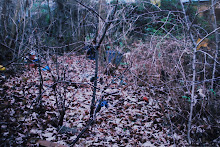Following is my attempt to grasp the initial ideas of event theory ….
An event can take many forms, they start with a screen. This is a setting for the event. So could be (using marks example) a café we decided to meet at for breakfast. The event has a place and a purpose.
We are going to meet have breakfast, perhaps have teas and with toast .we will chat about our plans for the day/evening. It’s a sunny morning so we sit outside. We might order more drinks (orange juice) final we pay and leave.
Or not. The thing with an event is that it’s unpredictable.
‘Chaos does not exist; it is an abstraction because it is inseparable from a screen that makes something-something rather than nothing –emerge from it.’
(Gilles Deleuze ‘whats is an event’)
I have played out the event how I imagine it event will unfold. (An event is the unfolding of life)
But of course this is not how it will happen, it will change due the ‘chaos’ factor.
We get to the café it’s closed (the screen has changed), its rainy. While trying to fine another we get wet. Cold and pissed off we order coffee in the local starbuck (boo).
Attempting to predict an event is futile
Live art is an event. So as an artist when I make a piece I am creating an event.
A setting/screen has been chosen. A time /place. And there is a (basic) plan to follow.
But a huge part of the work is letting chaos in.
The performance needs these inputs to process. The chance encounters.
If you put an event in motion something has to occur/ happen, you just can’t predict what, and let each minute unfold.
(if this is completely wrong please let me know, someone?)
Also
We talked about the process we go through while making work.
Because although the process is more obvious in a piece of performance, as the effect has a direct and immediate input. This also happen in a painting/ drawing etc. as everything has a period of time in which it was created. What took place in this segment of time? Everything happening around affects the process of making. And in turn the making process affect you. (working late into the night on a detailed drawing you wake up the next day tired and bleary eyed.)
Things to think about...
- Consider why I’m making work, what is instructing me to do so.
- What types of work do I create, why?
- Why do I want to create these things, what are the reasons behind each piece?
- Reflect on my work as a whole, what links each piece
- Apply it to a broader spectrum.
Those bullet point repeat themselves?( I just want to get these thoughts down so you will have to forgive me).
Thinking about my practice and how it will one day have to stands alone in the world scares me.
Just making work is not enough, there has to be reasons/depth within it.
I would say my work is about me trying to identify with and understand the world around me. And the many layers of this place in which we exist.
Were do I fit in? (too open?)
This started with me wanted to find out about the people around me, not the ones I know (they weren’t interesting) but the people rushing around me in the city. Each one had somewhere to go / or somewhere they wanted to go.
But were? Was it somewhere exciting/ dreary/ unknown/new?
I needed to find out, so I picked one of these bodies from a crowd and followed them.
Recording what I found intriguing about them (shoes, walk, glasses etc)
Making up what type of person they were.( were they lived, children they may have, hobbies, problems ,jobs etc)
These people (who I have records of, who I remember) don’t know me, but I have a tiny insight into their lives on that day.
They showed me around the city.
And now when I come across these places. I have a connection.
I was interested in conversations that took place in certain parts of the city.
I recoded walks I took in London, in parks, along the river, in shops.
Extracting the snippets of overhead conversations;
(‘ I just never thought of him until I saw Phil’ ‘more expensive then hers then?’)
Putting the back in place in the form of text. Taking these offhand comments (?) and making them visible.

This developed in to using the city as a place to play games. Rules were the basis of the games.
The people of the city joined in our games without realising. Their everyday action/appearance informed our action and appearances. They were our focus as we tried to find out place in the city.
i explored what happened when my space(my room) was relocated in the city.
how could a mark it as my space. with objects/belongings.


Recently my focus has shifted to the spaces directly surrounding me. Considering how I approach and react to these spaces.
For more details on this follow the link :thisisanon-space.blogspot.com
answers to these questions soon.....
